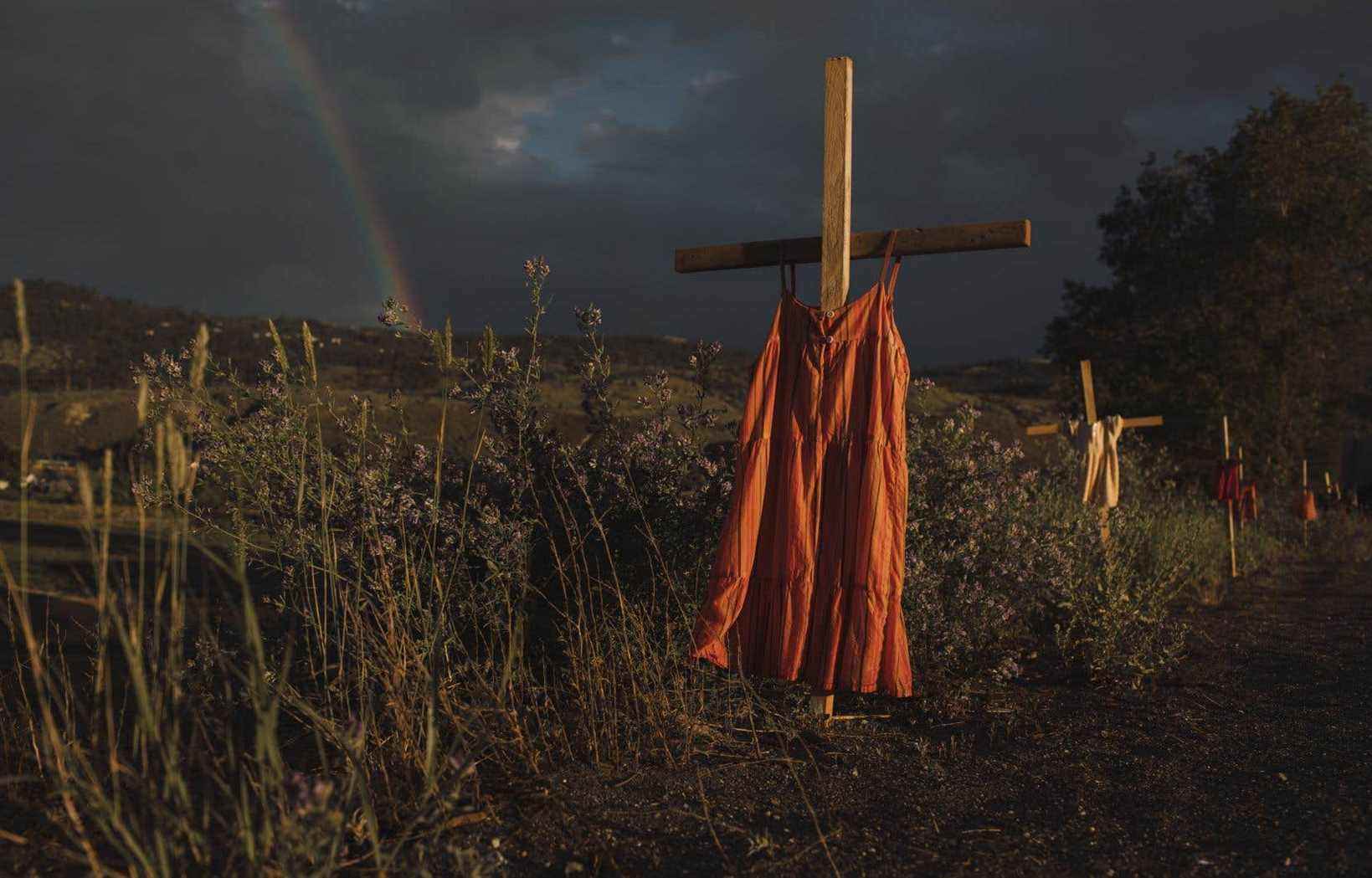Canadian photojournalist Amber Bracken won the top prize in the 2022 edition of the prestigious World Press Photo competition on Thursday thanks to her snap showing red dresses hung on crosses along a British Columbia highway in memory of deceased Indigenous children at the Kamloops boarding school.
The macabre discovery of 200 anonymous graves on the site of the former residential school for Aboriginals, in May 2021, particularly marked the spirits, both in Canada and elsewhere in the world. The news made headlines for weeks and above all forced the country to do some serious soul-searching. Research conducted elsewhere in Canada has since led to the identification of more than a thousand other unmarked graves near former residential schools.
The Edmonton-based freelance photojournalist traveled to Kamloops, the heart of the events, last June. It was there, on the edge of a highway, not far from the old boarding school, that she took her photo, which was selected today by the World Press Photo jury. The image was originally published in the pages of New York Times.
In the eyes of the members of the jury, the picture of the Alberta photojournalist perfectly embodies “the awakening of a shameful history” in Canada and forces a reflection on the global heritage of colonization and exploitation. They described her photo as a “perfect image that captures a rare light, and is at once haunting, striking and symbolic.”
“It’s kind of an image that sticks in your memory, it inspires a kind of sensory response. I could almost hear the silence in this photo, a silent moment of worldwide recognition of the history of colonization, not only in Canada, but everywhere,” said Rena Effendi, the president of the world jury, in a press release on Thursday.
other winners
In the Series of the Year category, Australian documentary photographer Matthew Abbott won. His pictures published in National Geographic show how Indigenous Australians strategically burn land using controlled burning (cool burning), a technique that is used to move fires slowly by burning only the underbrush and eliminating the buildup of fuels that could fuel larger blazes.
The Long-Term Project award went to Lalo de Almeida, based in Brazil. His series of black and white photos titled Amazon dystopia testifies to the extent of the exploitation of this region and its devastating effects on the ecosystem and the living conditions of the local indigenous communities.
Finally, the photographer of Ecuadorian origin Isadora Romero won the prize in the Free Format category for the look on the “disappearance of seeds, forced migrations, colonization and the loss of ancestral knowledge” that she has exercised during his stay in the small village of Une, in Colombia, where his ancestors come from. The jury particularly liked “his use of audio, video, stills and sequencing” in his story.
For this 65and edition, the judges had to choose the winning projects from some 64,800 images submitted by more than 4,000 photographers from around the world.
Visiting Montreal this summer
All of the winning photos from 2022 — both regionally and globally — will be part of the World Press Photo 2022 exhibition, which will begin its world tour on April 15 in Amsterdam and make a stop in Montreal this summer.
After a two-year absence due to the COVID-19 pandemic, the popular event will be back from August 31 to October 2 at Bonsecours Market in Old Montreal.
The exhibition has been making a detour through the metropolis since 2005. It will thus mark its 15and Montreal edition.
